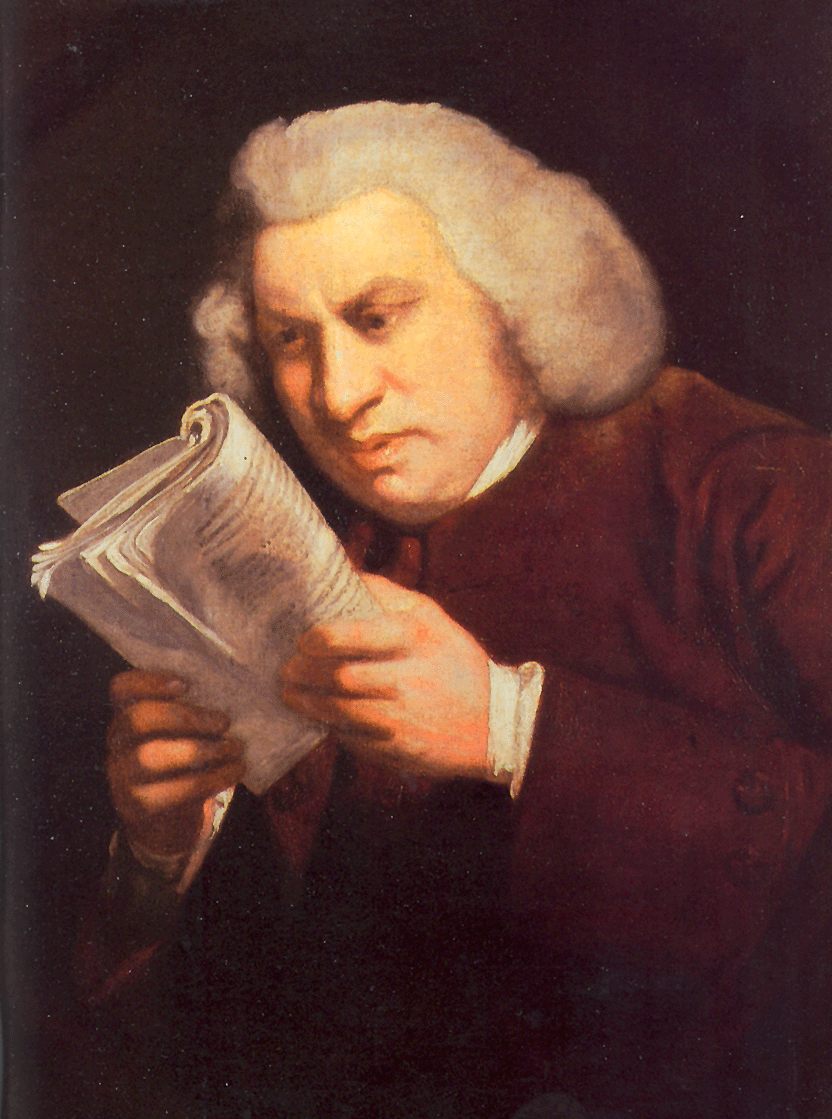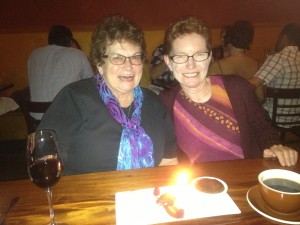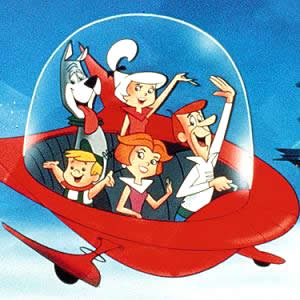
Samuel Johnson ponders ALA’s Code of Conduct
A passel of librarians just did two very cool things. First they pulled together on their own to synthesize existing American Library Association policies to create a code of conduct “statement” for ALA conferences — an action that makes ALA a safer space for people vulnerable to harassment. Then these librarians worked through the system to get ALA’s Executive Board to approve the statement. Andromeda Yelton, ALA member, was the lead “macher” for the CoC.
For an excellent round-up of current and contextual articles and commentary on the CoC, see Lisa Rabey’s blog post.
Needless to say, once these cool things happened, Complaints Were Voiced. These complaints fell into  three categories:
- ALA policy should ONLY come through ALA Council
- A code of conduct is unnecessary
- A code of conduct conflicts with ALA’s principles of intellectual freedom
Point 1: On statements versus policy
I begin with the first objection, which surfaced on the ALA Council list, only so I can immediately correct the errors of fact. As any number of people have pointed out, the Code of Conduct is not “policy.” It is an amalgamation of existing policy and procedure reinterpreted to apply to conference behavior. ALA has a long tradition of developing interpretations of existing policy and procedures, and it would seriously hobble the work of committees and other ALA units if every interpretation or statement had to be voted on, particularly by a body, such as ALA Council, which meets twice a year and spends far too much time in its own version of Groundhog Day, flogging the same toothless resolutions for hours on end.
There was a sub-objection under the “policy” discussion that the conversation about the CoC should have been brought to Council’s attention. Â Another error of fact: Executive Board was aware of this conversation and voted on it to boot, as it votes on many things that need attention between ALA conferences or is otherwise on their agenda. The Executive Board “is” ALA to a great extent; the Executive Director reports to the EB, and Council elects EB to do that work. The “conversation” argument also has poor moral standing because Council does not go to great lengths to make its own deliberations accessible, as I have been pointing out for many years.
In terms of political strategery, I’m divided. On the one hand, bringing more people into the fold on the discussion might have made the CoC less of a bad surprise and reduced the NIH (Not Invented Here) reaction of some Councilors. On the other hand, I have seen Council take something lucid and spot-on and timely and either send the poor thing into indefinite and infernal referral Purgatory or hack it into unintelligible word pudding. (Or both.)
If I got my modified Delorean DMC-12 out of the garage, I would drive back to the moment where the statement was almost ready (which I was oblivious to at that historical moment, having a few months back said “oh yes, such a thing needs to be done,” and then trotting off to other things while Andromeda et al actually DID it). Then I would  encourage Andromeda et al to launch a sotto voce campaign among a broader circle of ALA folk, using those ancient but honorable mechanisms of email and even telephones to share ideas, if only so that some of us would not end up simultaneously absorbing and defending the CoC. But this isn’t a criticism of the CoC, only an observation on building buy-in.
Finally, as I said on the Council list, Andromeda et al. did exactly what ALA members should do: they gathered together to take action on an issue, leveraging both their own group processes and their ability to communicate within ALA’s bureaucracy. They did it in a modern meetup style, coalescing around an idea, creating ad-hoc virtual space, and finishing their project on a timeline that met their other objectives, and that’s how these folk roll.
Note that this form of activity has interesting implications for considering the recruitment and retention of future ALA members. The traditional committee structure has its value, but the maxim that for each and every idea or project there must be an equal and opposite committee should be looked at very closely, particularly as we seek ways to streamline ALA so it can rebuild itself to fighting strength and also to help ALA attract and retain newer librarians. John Chrastka had a fresh mindset during his tenure as head of ALA’s member development and proposed different ways of involvement, but I got the sense he wearied of fighting City Hall.
Point 2: on the necessity of a code of conduct.
Besides, if anyone on Council felt that invested in a conference Code of Conduct, they should have made themselves useful and taken this on a long, a very very very very very VERY VERY VERY!!!!!! long, time ago — this, the governing body that only takes action at ALA’s annual and midwinter conferences. How typical of Council to emulate Samuel Johnson’s view of patrons of the arts: “Is not a patron, my lord, one who looks with unconcern on a man struggling for life in the water, and when he has reached ground, encumbers him with help?”
Johnson aside, the initial and subsequent reactions from some pundits explains why this CoC is necessary: because they thought otherwise.
When the CoC was announced, Will Manley posted a blistering renunciation of the Code of Conduct to his blog, which his inner circle of devotees lapped up. No surprise there. I can’t link  to the post, though Lisa Rabey has a cached version, because after the tables began turning, and people used the comment function on his blog post to defend the CoC, Will finally surprised me: he shut down his blog.
Nobody asked Will Manley to shut down his blog. Â I’ve been ruminating about his action for some time. What I get from his action, in the end, is that codes of conduct work. They work by pointing out that not all conduct is ok. They work by speaking truth to power. They work by shaking up mindsets. They work by acknowledging historical wrongs. They work by saying, no, this is not your space, it’s OUR space, and we have a right to be safe in that space. We have a right to that space. All of us. Â And if you do that thing you know is wrong to do, you are now accountable for your actions. When that is said out loud, there are those who will gather up their toys and go home, and to them I say: don’t let the door hit you in the butt.
You don’t have to know explicit sexual harassment to get what I’m saying about “space.” The sexual action is just a mechanism; aggressive space cooptation takes all forms. Â If you’ve ever had to squeeze your female body into a bus or airline seat next to a man who was sitting legs akimbo, jiggling his foot in your face, pressing his elbow into your bosom, you know what I am talking about. If you’ve ever sat on a committee or participated in a discussion list where you had to fight to be heard because men immediately commandeered the airspace (“Yes! Feminism is important! Let me spend the next 20 minutes explaining why…”), you know what I mean. If you’ve ever had the uncomfortable realization on a subway train or bus that the object pressing against your behind was not someone’s flashlight, you are nodding with me.
I have never experienced harassment at a conference other than heckling (which I’ll get to a bit later). But as a woman and a lesbian, I know harassment exists, and I’ve personally experienced it in a variety of settings.
The most blatant harassment I ever experienced happened in the military, when I was a captain stationed overseas at an airbase where the current regime was morally bankrupt. The harassment I experienced was a weirdly indirect “forced viewing,” in which a senior officer would habitually make highly sexualized references about two enlisted women in their, and my, presence, fully confident I wouldn’t talk back to a senior officer. When a new commander took over promising to right a lot of wrongs, I reported this captain’s behavior and requested a move to another unit. The move was granted without comment. Fortunately for the two young women left behind, the captain had orders for another assignment, and quickly left. Within a year he was promoted to major.
My story is hardly unique, and that’s the point: harassment is endemic to our culture. People who harass do so knowing this, and knowing that in many cases, they will not be held accountable. People have been harassed at ALA conferences for being female, transgender, differently-abled, of color — you name it. Andromeda brought this issue to her ALA peers because it had become a crusade in the tech conference world, where women were pushing back on the many ways men had used sexual power to diminish the space for women at conferences and in their profession. It wasn’t even a new issue for library conferences; Code4Lib, for example, had created a CoC a while back. It was just new for ALA conferences.
Point 3: The code of conduct and intellectual freedom
Boy howdy do I love it when men assert their right to pinch women’s behinds and frame it in the context of keeping information free. Â This brain-free nattering underscores exactly why codes of conduct are important. If you make the tremendous effort to actually read the 575 words in the Code of Conduct (which I have pasted at the end of this post, copied from my registration form for ALA Annual), you will see that as long as you aren’t a butt-smacking, “flashlight”-poking, sexist-comment-making galoot determined to make restrooms inaccessible for transgender attendees (and yes, that happened at an ALA conference, by a contractor for a conference center), you will be empowered, not limited, by the CoC. If you are such a galoot, guess what: you’re on notice.
Finally, a word about heckling. My first take on the CoC’s statements about heckling were that it too strong. I have been heckled twice at library conferences. Once was during the Internet Filtering Wars, when in a talk I proffered my opinion that filtering computers used by very young children was not a bad idea, which ran up against the “all filtering: BAD” position of ALA’s intellectual freedom establishment. It was helpful to see how strongly these opinions were held (strong enough that a woman stood up, I assume so her lungs could gather enough air to REALLY TELL ME HOW SHE FELT), and frankly, the heckling caused me no damage.
The other heckling incident was at Code4Lib, where a man began shouting at me when I compared open source software to free kittens. He did not yell “Liar!” in the manner of Wilson insulting the President, but he was clearly angry and in disagreement, and felt that his opinion needed to be made available to the (largely white male) crowd, right there at that point in my talk. In the time since that has happened I’ve approached it with a sense of humor, but the farther I get from this incident — and it has stayed with me a long time — the more I wonder why I couldn’t be allowed to finish my keynote before we had a Time of Sharing.
Someone on Facebook (I don’t remember who) commented that the difference was whether the heckler was “punching up.” In the first case, an ALA member with strong feelings shared her opinion. In the second, it’s sometimes hard to say where “up” is, but if you’re one of a handful of women in a room with several hundred men, it probably doesn’t rest with you.
Finally, I know the CoC is important because as soon as it was announced, a man who hadn’t done anything on this project immediately took credit for it. No really — that happened. It happened in a private discussion that shall not be quoted from, and as soon as it happened I did that thing I hate doing, which is how I know it needs to be done, which is to say “No, actually, it happened this way, and these people were involved,” and that of course was enough to nip that in the bud. But hey, the CoC was an idea worth stealing.
ALA’s CoC is not set in stone. Like all interpretations of policy, it can and will change as we and our world change. You don’t have to agree with every word of the CoC to pick up your registration badge and participate in the conference. But the world is just a little better, a little more right, a little more safe, because ALA’s CoC exists.
The ALA Code of Conduct (copied from the ALA Annual online registration form)Â
The American Library Association holds professional conferences and meetings to enable its members to receive continuing education, build professional networks, and discover new products and services for professional use. To provide all participants – members and other attendees, speakers, exhibitors, staff and volunteers – the opportunity to benefit from the event, the American Library Association is committed to providing a harassment-free environment for everyone, regardless of gender, sexual orientation, gender identity, gender expression, disability, physical appearance, ethnicity, religion or other group identity.As an association, ALA is strongly committed to diversity, equity and the free expression of ideas. These values have been repeatedly delineated in ALA policy (for instance: Policy A.1.4 – Core Organizational Values; Policy B.1.1 – Core Values of Librarianship; Policy B.1.2 – Code of Professional Ethics). Taken cumulatively, the values and beliefs delineated within ALA policy describe conduct based on a firm belief in the value of civil discourse and the free exploration of competing ideas and concepts – with a fundamental respect for the rights, dignity and value of all persons.Within the context of ALA policy and the professional practices of librarianship, critical examination of beliefs and viewpoints does not, by itself, constitute hostile conduct or harassment. Similarly, use of sexual imagery or language in the context of a professional discussion might not constitute hostile conduct or harassment.ALA seeks to provide a conference environment in which diverse participants may learn, network and enjoy the company of colleagues in an environment of mutual human respect. We recognize a shared responsibility to create and hold that environment for the benefit of all.
Some behaviors are, therefore, specifically prohibited:
Harassment or intimidation based on race, religion, language, gender, sexual orientation, gender identity, gender expression, disability, appearance, or other group status.
Sexual harassment or intimidation, including unwelcome sexual attention, stalking (physical or virtual), or unsolicited physical contact.
Yelling at or threatening speakers (verbally or physically).
Speakers are asked to frame discussions as openly and inclusively as possible and to be aware of how language or images may be perceived by others. Participants may – and do – exercise the “law of two feet.” [kgs edit: I added a link, as I was unfamiliar with this concept.] Exhibitors must follow all ALA Exhibits rules and regulations and ALA policies.
All participants are expected to observe these rules and behaviors in all conference venues, including online venues, and conference social events. Participants asked to stop a hostile or harassing behavior are expected to comply immediately.
Conference participants seek to learn, network and have fun. Please do so responsibly and with respect for the right of others to do likewise.Please contact Conference Services staff in the ALA Office at conference if you believe you have been harassed or that a harassment problem exists. All such reports will be directed immediately to the Director of Conference Services, who will determine and carry out the appropriate course of action, and who may consult with and engage other ALA staff, leaders and legal counsel as appropriate. Event security and/or local law enforcement may be involved, as appropriate based on the specific circumstances. A follow-up report will be made to individuals who report being harassed.Prior to each ALA Midwinter Meeting and ALA Annual Conference, ALA Conference Services will make the following information available:
Information on how to report incidents of any sort to Conference Management (telephone, room location)
Emergency contact information:
Venue (convention center, hotel) security
Local law enforcement, emergency and non-emergency
Local emergency and non-emergency medical information
Local taxi company(s)
Other local services, e.g. hotlines














